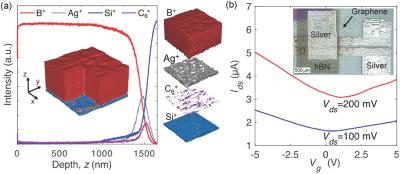Graphene-diamond junctions could assist in the realization of neuromorphic optical computers simulating human visual memory systems
Researchers from Nagoya University in Japan have designed highly efficient computing devices using graphene-diamond junctions that mimic some of the human brain's functions.

A phenomenon crucial for memory and learning is "synaptic plasticity," the ability of synapses (neuronal links) to adapt in response to increased or decreased activity. Scientists have tried to recreate a similar effect using transistors and "memristors" (electronic memory devices whose resistance can be stored). Recently developed light-controlled memristors, or "photomemristors," can both detect light and provide non-volatile memory, similar to human visual perception and memory. These excellent properties have opened the door to new materials that can act as artificial optoelectronic synapses.



